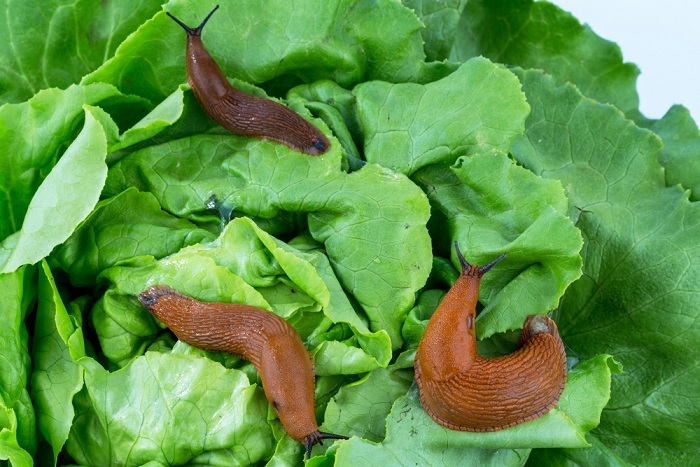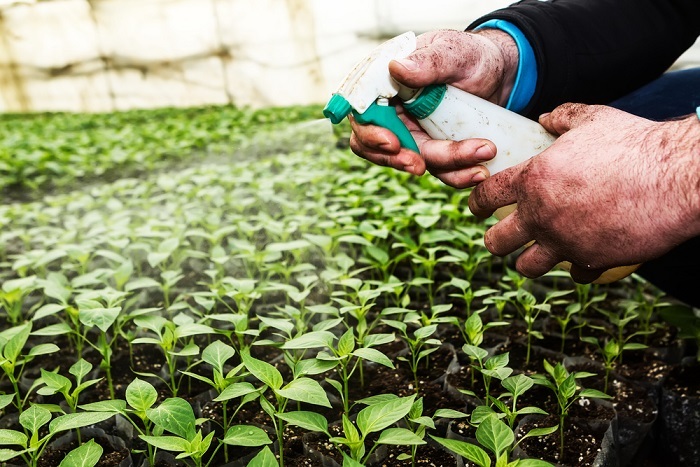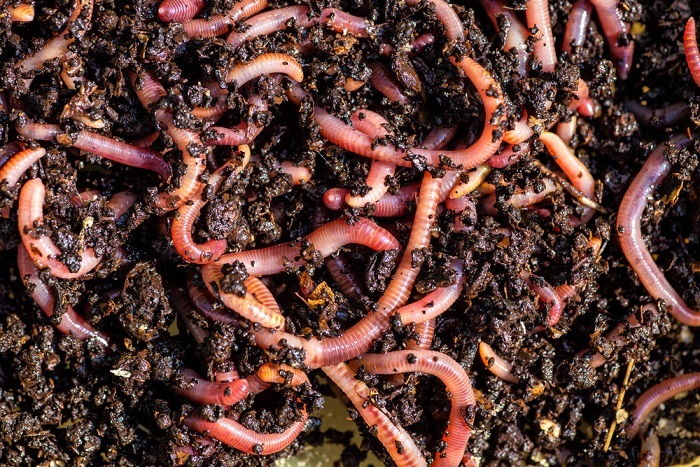
 Data Structure
Data Structure Networking
Networking RDBMS
RDBMS Operating System
Operating System Java
Java MS Excel
MS Excel iOS
iOS HTML
HTML CSS
CSS Android
Android Python
Python C Programming
C Programming C++
C++ C#
C# MongoDB
MongoDB MySQL
MySQL Javascript
Javascript PHP
PHP
- Selected Reading
- UPSC IAS Exams Notes
- Developer's Best Practices
- Questions and Answers
- Effective Resume Writing
- HR Interview Questions
- Computer Glossary
- Who is Who
Eco Friendly Agriculture Chemicals: Bio pesticides, Bio-Herbicides, and Bio Fertilizers
Introduction
Fertility of soil is defined as the soil's ability to support the healthy growth of the plants. Soil has two major components like living and non-living components.
Non-living components of the soil provides the substrate for anchorage and helps in supplying the water, air and nutrients whereas the living components which includes microbial diversity helps in regulating the availability of nutrients and providing the growth regulators to the plants for their vital growth and activity.
So continuous usage of the synthesized chemical fertilizers in agricultural crops may deplete these living microbes like bacteria and fungi and macro-organisms like earthworms, termites and rodents, making the soil dead by losing its fertility. Hence at first chemical fertilizers usage is stopped and the plant is to be provided with enough nutrients in the form of organic manure which is eco-friendly containing biological wastes then we need to provide bio-fertilizers to reduce the toxicity of the soil and increase the microbial diversity of the soil.
Using the eco-friendly agriculture chemicals crops gives us good yield starting from the first year and is regenerative after few years onwards whereas chemical fertilizers are like one-time usage for crops.
Some of the eco-friendly agriculture chemicals which helps in maintaining the quality of the soil are ?
Bio-Pesticides.
Bio-Herbicides.
Bio-Fertilizers.
Bio-Pesticides
Food crops throughout the world are mainly affected by different species of insects, weeds, disease causing pathogens and nematodes. Hence pesticides are used for better production of crops against the losses caused by the pests and disease causing pathogens. These mainly improve the quality and quantity of the food products.

As the agricultural crops suffers a major loss due to pests, bio-pesticides which are made from the organic substances and is eco-friendly controls the pests without inducing any toxicity to the environment.
The use of synthetic chemical pesticides which harms the environment are reduced by the bio-pesticides making it a key component of integrated pest management program.
Risks Associated with Chemical Pesticides
Continuous usage of these pesticides might result in pest resistance and also high persistence of these chemical residues in soil leads in toxicity to plants, mammals, aquatic animals and other beneficial organisms.
Disturbs the ecological balance.
Causes environmental pollution or degradation.
Enters the food chain and leads to bio-accumulation and bio-magnification.
Bio-pesticides are new form of pesticides usually derived from the living organisms like animals, plants and micro-organisms like bacteria, fungi, viruses etc. These are environmentally friendly and has low residual toxicity.
Bio means the life and pesticides includes the substances intended for preventing, destroying or controlling any pests. So bio-pesticides are the introduction of any living organism that controls pests by biological non-toxic methods. These bio-pesticides have been in usage for centuries to control the pests. Bacillus thuringiensis which is called as BT was a widely used initial bio-pesticide till today. Other organisms include Trichoderma sps, Beauveria etc.
Classification of Bio-pesticides
There are mainly 3 major classes of bio-pesticides. These includes the following.
Microbial Pesticides - Includes pathogen or parasite that infects the target and are non-toxic to animals and humans. Examples is BT which targets the larva of insects.
Plant Incorporated Protectants (PIP) - Biopesticides which acts as inducers of plant host resistance by introducing the genetic material into plants.
Biochemical Pesticides - These are naturally occurring substances and can control the pests with the use of non-toxic mechanisms. Examples are insect sex pheromones which prevents mating, aromatic plants which traps pests.

Bio-Fertilizers
Fertilizers which are made up of biological organisms like bacteria are referred to as bio-fertilizers.
Generally, fertilizers are important as they increase the nitrogen content in the soil. To know the importance of organisms in the fertilizers, understanding the concept of symbiosis is necessary.
Symbiosis
It is the relation-ship between the two organisms in an ecosystem where both the organisms are benefitted from one another.
Here plants supply the major nutrients to the bacteria living in the rhizosphere region and in return bacteria fixes the atmospheric nitrogen (N2) and supply it to soil which helps the plant to grow by getting its major nutrient i.e., nitrogen.
So instead of chemical fertilizers which are the source for N, bio-fertilizers containing the nitrogen fixing bacteria usually helps the plant.
Plants which contains these nitrogen fixing bacteria in their roots are called leguminous plants and those which do not possess these bacteria are known as non-leguminous plants.
Some of the bacteria which helps in fixing atmospheric nitrogen include
Cyanobacteria - free living bacteria and not symbiotic.
Endophytic Bacteria - present in non-leguminous plants, symbiotic.
Rhizobacter - present in leguminous plants, symbiotic.
Production of Bio-Fertilizers
First a starter culture of cyanobacteria is taken and transferred to the liquid broth containing tube. Then this cultural inoculum of bacteria from the broth is transferred to a giant chamber containing soil and water where the development of bacteria occurs. After sometime bacteria is developed into a huge mass in the fermenter chamber. This bacterial mat is then isolated from the fermenter and sterilized which is later dried and served in a powdery form of bio-fertilizer to mankind.
Through this process we can develop the high amounts of cyanobacteria which can be used as bio-fertilizer.
The cyanobacteria or other nitrogen fixing bacteria which is obtained through production is made readily available to the plants by following 2 strategies.
Seed Pelleting Strategy
Here we cover the plant seeds with the cyanobacterium mass which then later implanted in the soil. This provides the nitrogen enriched soil for the growth of plants.
Inoculum Carrier Strategy
Here the obtained culture from the production is mixed with the carrier substances like peat or sterile soil which allows an easy handling of culture and thereby application to the plants.
Usually bacteria which we use for this strategy includes ?
Cyanobacterium anabaena and C. nostoc
Endophytes - Acetobacter and Azospirillum
Combinations - Azolla and C. anabaena which are in symbiotic relationship are used

Bio-Herbicides
Herbicides are the chemical substances which are used to control the growth of the unwanted plants like weeds in the agricultural crops. These weeds by consuming the nutrients from the soil leads the depletion of nutrients for the actual crops thereby reducing their growth. These herbicides hence are also called as weedicides.
When we use biological organisms or substances like pathogens, phytotoxins and other microbes to control the weeds are known as bio-herbicides.
Example: Introduction of a natural herbivore, Cactoblastis cactorum which feeds on the weeds has resulted in extensive growth of Opuntia plant.
Parasitic wasps, painted butterflies can target the specific weeds without harming the useful crops. Hence these are used as bio-herbicides.
Some of the commercially available bio-herbicides are
Devine: First mycoherbicide derived from fungi Phytopthera palmivora. It can kill strangler wine a lethal root in the citrus plantation.
Collego: Derived from the fungi Colletotrichum gloeosporioides and used to control Aeschynomene virginica in rice and soy bean fields.
Biomal: Consists of spores of Colletotrichum gloeosporioides used to control Malva pusilla.
Conclusion
As part of the sustainable development, bio-fertilizers and bio-pesticides play a major role that helps in maintaining the quality of the soil and also in maintaining essential soil microbes without inducing any toxicity to humans and animals. As the chemical artificial synthesized fertilizers which are used for providing nutrients to plants have low fiber content, they have low water retention capability and organic supply capability.
Hence Bio-fertilizers has come into existence which meet the needs of a plant using the living organisms. So due to the major concern of synthetic chemical pesticides use for the human health and environment, bio-pesticides which are usually derived from the living organisms are widely used in the today's agricultural crops. Also the bio-herbicides which are used to control weeds using organisms are included under eco-friendly agriculture chemicals.

